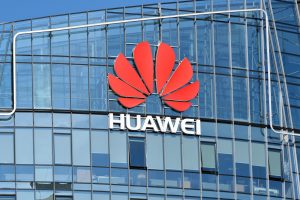Because telecommunications play a pivotal role in the collection and transmission of information, geopolitics and national security are often inseparable from more mundane commercial interests when countries build national data networks. This has become increasingly acute as there are only a few companies in the world capable of providing next generation network infrastructure, and China’s Huawei is one of them. With tension between the United States and China on the rise, telecommunications is becoming an increasingly fraught area of international competition and this has started to filter down into Southeast Asia. The European Union and United States recently warned Malaysia about the national security risks of using Huawei to build its 5G network, for instance.
Unsurprisingly, countries in the region have adopted a range of approaches and differing levels of engagement when it comes to Chinese involvement in their national telecom sectors. In 2020, Singapore’s leading mobile operators decided against using Huawei to develop national 5G networks, with contracts going instead to Ericsson and Nokia. It’s not clear this was influenced by geopolitics – it could easily have been a commercial decision, as Singtel has a long business relationship with the European firms. In Vietnam, on the other hand, where all three major telecom operators are state-owned, decisions do seem more informed by national security concerns as there is apparently strong reluctance to use Huawei equipment or allow a significant role for China in national telecom infrastructure.
In Indonesia, telecom operators are a mix of private, foreign, and partially state-owned companies who are more responsive to market dynamics. The sector has shown considerable openness toward Huawei, as their equipment is typically cost competitive and comes with upskilling for Indonesian workers and these incentives generally outweigh any national security concerns. Notably, however, Chinese entities do not hold significant ownership stakes in any of Indonesia’s largest telecom operators (Telkomsel, XL Axiata, or Indosat Ooredoo Hutchison) nor do they have significant financial claims that could be used as geopolitical leverage.
A similar situation prevails in the Philippines where the telecom sector is dominated by two private companies: Globe Telecom and PLDT. Globe is majority owned by the Ayala Group (a Philippine conglomerate) and Singapore’s Singtel. PLDT has a more diversified shareholding structure but, as in Indonesia, Chinese entities do not appear as significant owners.
Chinese suppliers such as Huawei do have a large footprint in the sector, however. Trade statistics from 2020 show that a substantial amount of network hardware like routers, switches and data processing equipment is imported from China. In 2019, a Globe executive stated that approximately 80 percent of its equipment was sourced from Huawei and that rising geopolitical tensions were compelling the company to look for alternative suppliers.
Malaysia has developed a novel plan for dealing with 5G national security vulnerabilities. The government formed a state-owned company called Digital Nasional Berhad (DNB) which will oversee the construction of a national 5G network. DNB will then lease network space to Malaysia’s mobile operators. The goal is to reduce costs, but also to increase state control over the physical 5G infrastructure to reduce security risks. DNB selected Ericsson to build the 5G network, although questions about the process have surfaced. This is where the idea of a second network, possibly built by Huawei, comes from. In response to concerns from Western governments about network security, Malaysia has indicated it will keep its options open and go with whatever vendor offers the best deal.
The Thai telecom sector has undergone some restructuring in recent years as leading mobile operators DTAC and True consolidated in anticipation of the move to 5G. This left two major players in the space, True Corp and AIS. AIS is majority owned by Singtel and Thai conglomerate InTouch holdings, while True’s ownership structure includes Thailand’s CP Group as well as a 10 percent stake held by China Mobile, a majority state-owned company that is one of the largest telecom companies in China. This makes Thailand one of the only major ASEAN markets where a Chinese entity holds a direct ownership stake in a leading mobile operator.
Although many countries in Southeast Asia use Chinese equipment in their telecom infrastructure because it is cost competitive and often comes with attractive financing terms and upskilling, the overall level of engagement and risk perception varies considerably across the region. Vietnam is wary of Chinese involvement in its telecom networks, Indonesia and the Philippines are somewhere in the middle, while China Mobile has inserted itself directly into the ownership structure of the sector in Thailand. Malaysia meanwhile is pioneering an entirely new style of national 5G development which initially excluded Huawei, but is now leaving the door open.
There is no consensus on what these varying levels of Chinese involvement mean in terms of national security or geopolitics. Often it’s as much a commercial decision as anything else, and Chinese firms come in with competitive bids. This underscores that states in Southeast Asia often have very different economic, national and strategic interests which shape their perception of China and their willingness to engage. If the United States wants to alter these perceptions and expand its own strategic footprint in the region, it needs to think very seriously about whether and how it can offer attractive alternatives especially in terms of economic engagement.

































